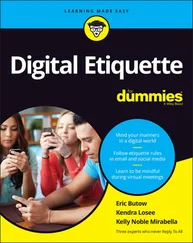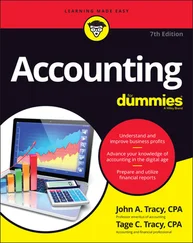Kenneth W. Boyd - Cost Accounting For Dummies
Здесь есть возможность читать онлайн «Kenneth W. Boyd - Cost Accounting For Dummies» — ознакомительный отрывок электронной книги совершенно бесплатно, а после прочтения отрывка купить полную версию. В некоторых случаях можно слушать аудио, скачать через торрент в формате fb2 и присутствует краткое содержание. Жанр: unrecognised, на английском языке. Описание произведения, (предисловие) а так же отзывы посетителей доступны на портале библиотеки ЛибКат.
- Название:Cost Accounting For Dummies
- Автор:
- Жанр:
- Год:неизвестен
- ISBN:нет данных
- Рейтинг книги:4 / 5. Голосов: 1
-
Избранное:Добавить в избранное
- Отзывы:
-
Ваша оценка:
- 80
- 1
- 2
- 3
- 4
- 5
Cost Accounting For Dummies: краткое содержание, описание и аннотация
Предлагаем к чтению аннотацию, описание, краткое содержание или предисловие (зависит от того, что написал сам автор книги «Cost Accounting For Dummies»). Если вы не нашли необходимую информацию о книге — напишите в комментариях, мы постараемся отыскать её.
Cost Accounting For Dummies
Cost Accounting For Dummies
Cost Accounting For Dummies — читать онлайн ознакомительный отрывок
Ниже представлен текст книги, разбитый по страницам. Система сохранения места последней прочитанной страницы, позволяет с удобством читать онлайн бесплатно книгу «Cost Accounting For Dummies», без необходимости каждый раз заново искать на чём Вы остановились. Поставьте закладку, и сможете в любой момент перейти на страницу, на которой закончили чтение.
Интервал:
Закладка:
After lunch, you stop by your office assistant’s desk and say: “You know, a client should expect that if we show up for a job of any size we’re going to incur some office and vehicle costs. I don’t think a client will be surprised by those fees.”
The assistant thinks for a minute. “Yeah, that’s fair. If they showed up at my house for a job, those indirect costs seem okay. I guess I’d expect to pay for it somehow. As long as the cost charged to a small job is not huge, I think charging a rate per customer is reasonable.”
 The discussion with your office assistant may convince you that your indirect cost allocation should be more specific. If you could show the client how their specific job generated indirect costs, he or she would be more inclined to agree with your billing.
The discussion with your office assistant may convince you that your indirect cost allocation should be more specific. If you could show the client how their specific job generated indirect costs, he or she would be more inclined to agree with your billing.
You need to weigh the cost and time needed to allocate costs with the benefit of knowing more specific information. If customers generally accept the $55 allocation rate as reasonable, great. Probably no reason to dig further into your indirect costs.
If the majority of your customers have a problem with the rate, you should consider more detailed analysis and present a more detailed indirect cost billing. If not, you may lose the opportunity to do more work with the same group of clients.
Presenting total job costs
Table 4-1shows the total costs for the Johnsons’ fence job.
TABLE 4-1Job Cost Sheet — Johnson Fence Job
| Type of Cost | Amount or Quantity | Price or Rate | Total |
|---|---|---|---|
| Direct material | 600 square feet | $5 per square foot | $3,000.00 |
| Direct labor | 40 hours | $20 per hour | $800.00 |
| Mileage | 45 miles | $.20 per mile | $9.00 |
| Indirect costs | 1 customer | $55 allocation | $55.00 |
| Total job costs | $3,864.00 |
Deciding on costing for IT consulting projects
If you manufacture lawn mowers or provide landscaping services, job costing is pretty straightforward. With the help of this book (a shameless plug), you’ll understand the types of costs incurred, and be able to assign costs as either fixed or variable.
Cost accounting gets more complicated when you work in a consulting role — someone who gets paid for what they know. Doctors, attorneys, and architects are good examples. Sure, you can measure the hours worked by the consultant, but what about other costs? The costing process may get confusing, and you may not determine the total costs accurately. You know what that means: Without the correct total cost, you can’t price your product to reach a specific profit level.
As technology advances continue, business owners need more IT consulting help. In fact, you may be writing checks for IT services right now (and maybe I should have picked IT as a career). Since everyone needs IT help eventually, let’s use IT to understand how consultants use job costing to manage their businesses.
In this example, assume that Everest Investment Management is a money manager, and the owners need a better system to provide their clients with monthly investment statements. Customers benefit from statements that are clearly labeled, use colors, and present financial data using charts and graphs. Investors need to know where they stand financially, and a well-designed statement is a huge added value for customers, particularly for clients who are not financially savvy. I hope you’re buying what I’m selling here.
Determining project needs
Prestige IT is asked to bid on Everest’s project, and Julie the owner starts to document the steps required to complete the project. So, what needs to happen to get a better investment statement to customers? Mull over these steps:
Discussing the project with staff. Julie must understand how statements are currently created, and what customer feedback reveals about the current format. After a long discussion and follow-up communication, the Prestige team and the Everest staff must agree on a list of needed changes.
Building a prototype. Next, Julie uses what she learned to create a new version of the statement. Everest supplies a fictitious list of customer securities and the customer’s buy and sell transactions for stocks and bonds. Prestige’s software program produces a statement, based on the trading activity.
Implementing the new software. When the Everest staff agrees that the software can produce accurate statements, Prestige must take all the existing client data and use the new software to generate customer statements. This is the hard part — just ask anyone who works in IT about converting to a new system. The process requires careful data management and testing, and each statement must be reviewed for accuracy. Everest needs accurate statements to comply with industry regulations, and to serve the needs for customers.
Whew! That sounds like a ton of work. How much is this going to cost?
Plugging in job costing
Use job costing when each product you make or service you provide has a unique set of costs. I think you’ll agree that job costing is needed for the Everest project.
At this point, step back, take a deep breath, and think about four types of costs originally discussed in Chapter 2: fixed costs, variable costs, direct costs, and indirect costs. Ready to do this? Let’s tackle them in two chunks: fixed and variable, then direct and indirect.
MULLING OVER FIXED COSTS AND VARIABLE COSTS
Prestige IT has a big variable cost, which is the hours that Julie and her IT staff spend on the project. To compute costs, Julie simply multiplies a billable hourly rate for each staffer, multiplied by the expected hours worked. However, it’s not possible to forecast the exact number of hours of labor required.
If you work in a consultant role, provide a range of hours required for the job, based on your best estimate. In this example, Julie forecasts 800 to 1,000 total hours, and hours greater than 1,000 require prior approval from Everest. This approach prevents any client surprises, if more hours are needed to complete the work. As long as you document how the hours were used and what work remains, you can justify the extra hours needed to complete the project.
Prestige will have other variable costs, including travel, office supplies, and possible subscription fees for specialized software used for the project.
There may also be a small amount of fixed costs related to the project. For example, Prestige may purchase a commercial liability insurance policy, to protect the firm against a client lawsuit. While many firms have these policies in place, Prestige may need to pay an additional premium for the Everest project risk exposure.
SEPARATING DIRECT COSTS AND INDIRECT COSTS
To this point, Prestige has analyzed direct costs, meaning costs that can be traced to the project (both fixed and variable). To determine total costs, Julie must allocate indirect cost. You’ll find a fascinating discussion of direct costs and indirect costs in Chapter 2.
 Most business owners do not properly account for indirect costs, and they project total costs to be much lower than the actual total. Every cost you incur, whether directly traced to a customer or not, must be included in the price of your product or service. This point is made throughout the book, so be ready!
Most business owners do not properly account for indirect costs, and they project total costs to be much lower than the actual total. Every cost you incur, whether directly traced to a customer or not, must be included in the price of your product or service. This point is made throughout the book, so be ready!
Интервал:
Закладка:
Похожие книги на «Cost Accounting For Dummies»
Представляем Вашему вниманию похожие книги на «Cost Accounting For Dummies» списком для выбора. Мы отобрали схожую по названию и смыслу литературу в надежде предоставить читателям больше вариантов отыскать новые, интересные, ещё непрочитанные произведения.
Обсуждение, отзывы о книге «Cost Accounting For Dummies» и просто собственные мнения читателей. Оставьте ваши комментарии, напишите, что Вы думаете о произведении, его смысле или главных героях. Укажите что конкретно понравилось, а что нет, и почему Вы так считаете.












